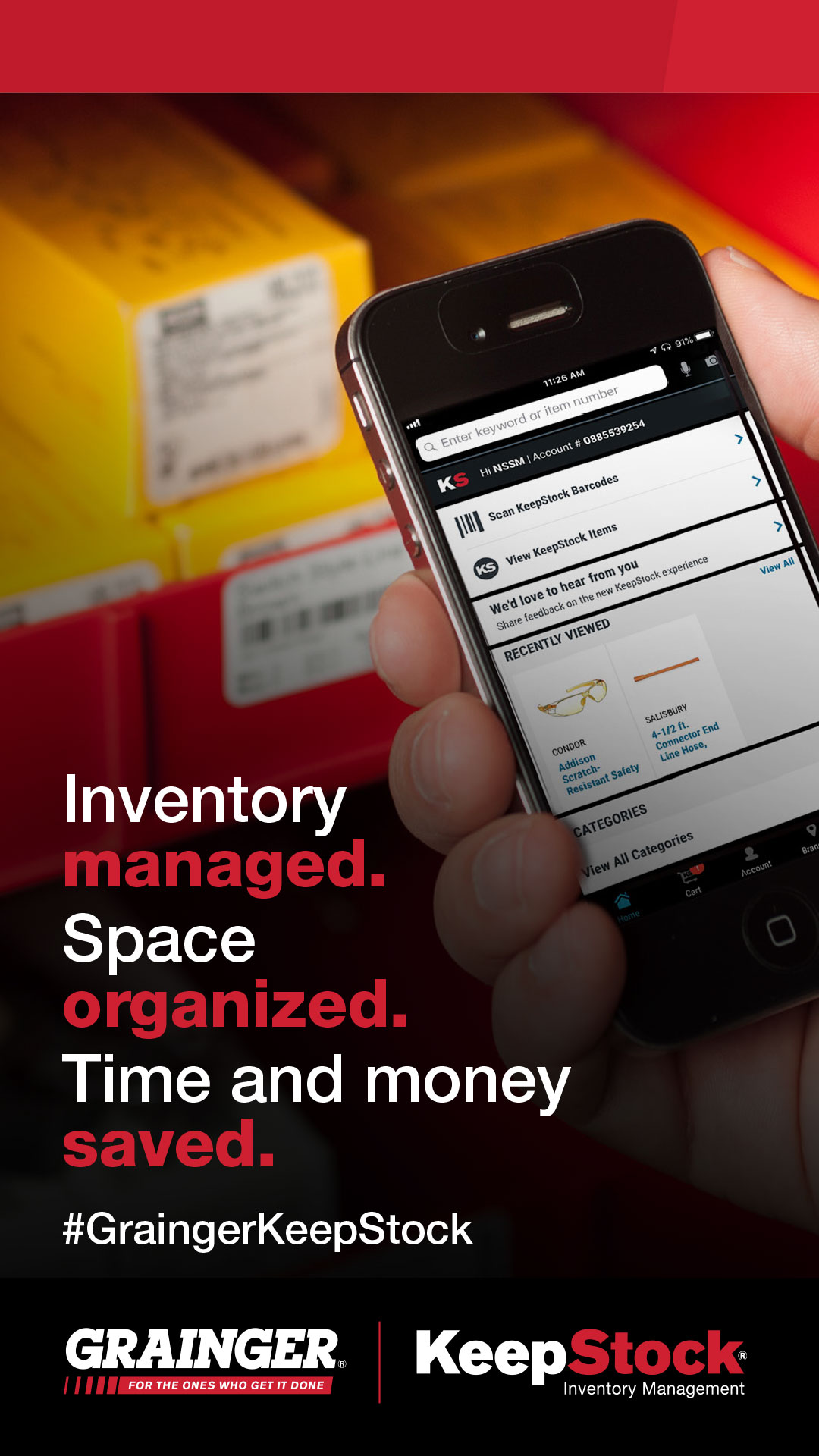

Navigating the Complex World of Inventory Management
By Grainger Editorial Staff 1/19/20


The changing landscape of eCommerce has introduced new inventory management challenges for facility managers. Between the second quarter of 2018 and the second quarter of 2019, retail eCommerce sales grew by 13 percent, according to MarketingCharts. Customers expect a better and quicker buying experience, and increased eCommerce has made it more challenging for facilities to ship, track and deliver products, while also mitigating increased transportation costs. With eCommerce growing year over year in both the business-to-business (B2B) and business-to-consumer (B2C) spaces, facility managers are rethinking how they manage their inventory levels to keep pace with increased demand and consumer expectations.
Below are some of the most common fulfillment challenges facing facility managers and how a solid inventory management program can help solve them.
Fulfilling Different Order Types
Because customers have a range of different shopping habits, businesses must be able to handle both one-off and recurring orders. Depending on your customers’ habits, the number of SKUs you carry, your facility layout and other factors, you should determine the picking style that makes the most sense for your business and then use an inventory management software that optimizes for that style. Batch or consolidated picking, for example, focuses on collecting the same SKU for multiple orders at a time, whereas discrete picking focuses on fulfilling one order at a time, according to SoftwareConnect.
An automated or partially automated inventory management system can help support your picking style so that your employees can fulfill orders more efficiently. According to Logistics Management, companies can use fully automated solutions or can integrate systems into enterprise resource planning platforms (ERP) for demand forecasting, stock-out alerts and barcode scanning for quicker fulfillment. According to F. Curtis Barry & Company, the most important inventory management features include forecasting, barcoding and scanning and actionable inventory analysis. Leveraging an inventory management system that includes these features will allow you to quickly fulfill orders in the way that works best for your business.
Automating the inventory management process allows companies to take a proactive approach to managing customer orders. Using historical data and current projections, an automated system uses order set points to make adjustments as inventory is sold and ordered.
Tracking Shipments To Meet Customer Demand
A survey of 1,100 small businesses found that 46 percent of small to midsized companies either don’t track inventory or use a manual inventory management method. Driven by the large e-tailers that promise next-day and two-day delivery, companies have to be able to fulfill and ship orders accurately and quickly. To do this, they need solid inventory management that leverages automation. The problem is exacerbated for multi-location firms that have to track inventory across different geographies. A motorcycle helmet manufacturer that has an item in stock in a West Coast warehouse, for example, and needs to get it to a customer in New York within two days, will be forced to use costly air transportation to meet that goal. These last-minute moves can eat up profit margins or, worse yet, leave a customer hanging.
Automated inventory management systems that will provide real-time insight into shipped products and your supply chain will help to mitigate transportation costs. The arguments in favor of this move are compelling: When operations upgrade their pick/inventory systems from paper and pencil to a more integrated form of order processing, they gain an average 25 percent in overall productivity, a 10–20 percent gain in space use, and 15–30 percent more efficient use of stock, according to EasyPost.
Last Mile Logistics
According to Eye for Transport, almost 25 percent of supply chain professionals say delivery costs are the biggest challenge for B2C eCommerce companies. Today, inventory management needs to extend to a customer’s doorstep. This level of service includes scanning products once they’re en route for delivery, but also ensuring that you have real-time insight into where the products are at all times and proof of delivery. In this way, you can build an inventory management program that optimizes the most efficient delivery routes for your products. In turn, a solid program will help ensure you aren’t holding onto inventory for too long and will allow you to have better insight into how quickly customers can receive your products.
Grainger KeepStock
Grainger’s KeepStock inventory management solutions help make it faster and easier to manage your critical inventory. KeepStock provides data intelligence so you have a complete picture of your inventory and will help you avoid stock-outs. Learn more about Grainger KeepStock.
The information contained in this article is intended for general information purposes only and is based on information available as of the initial date of publication. No representation is made that the information or references are complete or remain current. This article is not a substitute for review of current applicable government regulations, industry standards, or other standards specific to your business and/or activities and should not be construed as legal advice or opinion. Readers with specific questions should refer to the applicable standards or consult with an attorney.







